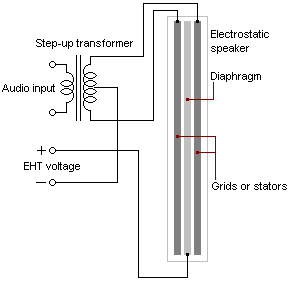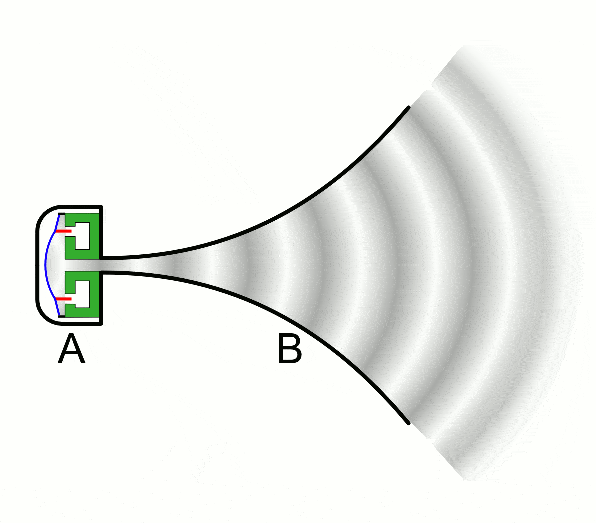Speakers are vital to any home theater or media room. Inferior speakers result in poor quality sound that ruins the audio experience.
The movement of air in such a way that creates an audible sound is the basic principle of any speaker. There are five main ways to achieve this motion, each giving different types of speakers their name:
In this article, we discuss each type of speaker, their most common application, and how they work.
Dynamic enclosure models are passive devices; they have no power supply of their own, instead of using that from the stereo or amplifier.
They rely on 2-drivers, a woofer, and a tweeter, to encompass a wide range of frequencies.
The sealed box is integral to their operation; air pressure builds up at the back of the cone, giving additional power to the woofer. Any air leaks render the speaker inefficient as the woofer won't function.
Enclosure speakers have high power handling capabilities and extended frequency response.

Unlike enclosure speakers, electrostatic speakers use a single driver. It's a thin membrane that stretches across two electrically charged panels.
The amplifier sends A/C to the membrane to produce sound. It combines with the current running through the diaphragm (from the direct power source). Polarity switches from negative to positive, creating oscillations – sound waves - between the 2-conductive panels.
Electrostatic speakers produce crisp, high-frequency sound, but as the membrane has little movement, the lower-frequency sound isn't always a quality match.
Planar magnetic speakers work on a very similar principle to electrostatic ones. Powerful magnets replace conductive panels, and the wide diaphragm is now a narrow metal ribbon.
When a live current from the amplifier passes through the ribbon, it is attracted and repelled by the magnets. The resultant movement generates sound waves in the surrounding air.
The diaphragm is extremely small and light, enabling them to reproduce sound with incredible accuracy.
For this reason, planar magnetic speakers are typically used in high-quality headphones.

The system uses traditional dynamic drivers attached to the narrow tip of a large cone structure (the diaphragm) It supplies periodic pressure to the small entry port, which is where it derives its name, a compression driver.
The high volume of air that is displaced through the port results in great pressure variation.
It is a sensitive system, capable of filling large areas with loud sound volumes. The long, tapered horn assists the efficiency of the speaker. The output is up to 10-times louder than a traditional cone-style speaker.

Subwoofers contain just one driver; the woofer. It produces the lowest frequencies, bass, with a range of 200Hz or less, the lower limit of human hearing.
Subwoofers are vital to most sound systems; without them, the bass is either distorted or missing altogether. When used in conjunction with other speaker types, subs fill in the low range gaps that some systems can't achieve; it is a supplementary speaker.
They have large diaphragms measuring 8" - 12" in diameter. The large surface area produces low frequencies as sound waves travel slower to traverse it.
Achieving perfect sound from subwoofers is difficult to master; unless perfectly balanced, the bass overpowers or drowns out sound, making it a beat, and sound non-musical.
Music travels through a stereo or amplifier with an electric current. The output voltage rises as the current flows through the speaker to the voice coil creating a magnetic field.
It repels the cone, pushing it further from the magnet; the air's movement creates the sound waves.
When the electric signal reaches a peak, the current and magnetic field weakens, the cone reverts to its initial position.
This is known as zero crossover – the point at which there is zero voltage.
The electric signal changes polarity from positive to a negative voltage allowing the current to flow to the voice coil in the opposite direction.
The field now attracts the magnet, pulling it closer.
The procedure repeats thousands of times per second to produce a sound of different frequencies.
Speakers are relatively simple devices consisting of a box (enclosure) to hold and protect internal speaker drivers, permanent magnets, inner and outer suspension, and a voice coil.
From the front view, drivers most often appear as circular elements although they are conical, horn-shaped, domed, or even ribbons.
They have a large surface area known as the cone or diaphragm. It is the back and forth movement that creates sound.
There are typically three types of drivers, rated depending on their frequency range: Tweeter, Mid-range, and Woofer.
The only speaker driver to effectively emit the entire audio sound spectrum is the full range speaker. However, the system isn't as effective due to size disparity; Too large and it loses the high-frequencies, too small and the low=frequencies suffer.
They have a diameter of 3" - 8", are practical and functional, often at the expense of sound quality.
Combining various speakers in one enclosure produces a balanced, well-rounded sound.
Two-way speakers combine woofers and tweeters in one enclosure.
Three-way speakers contain a combination of all 3-drivers for the best overall audio experience.
A crossover divides incoming signals before distributing them to the appropriate driver.
Typically, the larger the driver is, the lower its frequency range.
High-frequency occurs when sound waves travel quickly between high and low-pressure points. Therefore, the cone should be small, something that a slower-moving low-frequency signal struggles with.
Different types of speakers produce different sounds within a limited range. A driver ensures the precise amount of sound within said bandwidth combines, resulting in perfectly balanced sound and limited distortion.
References
